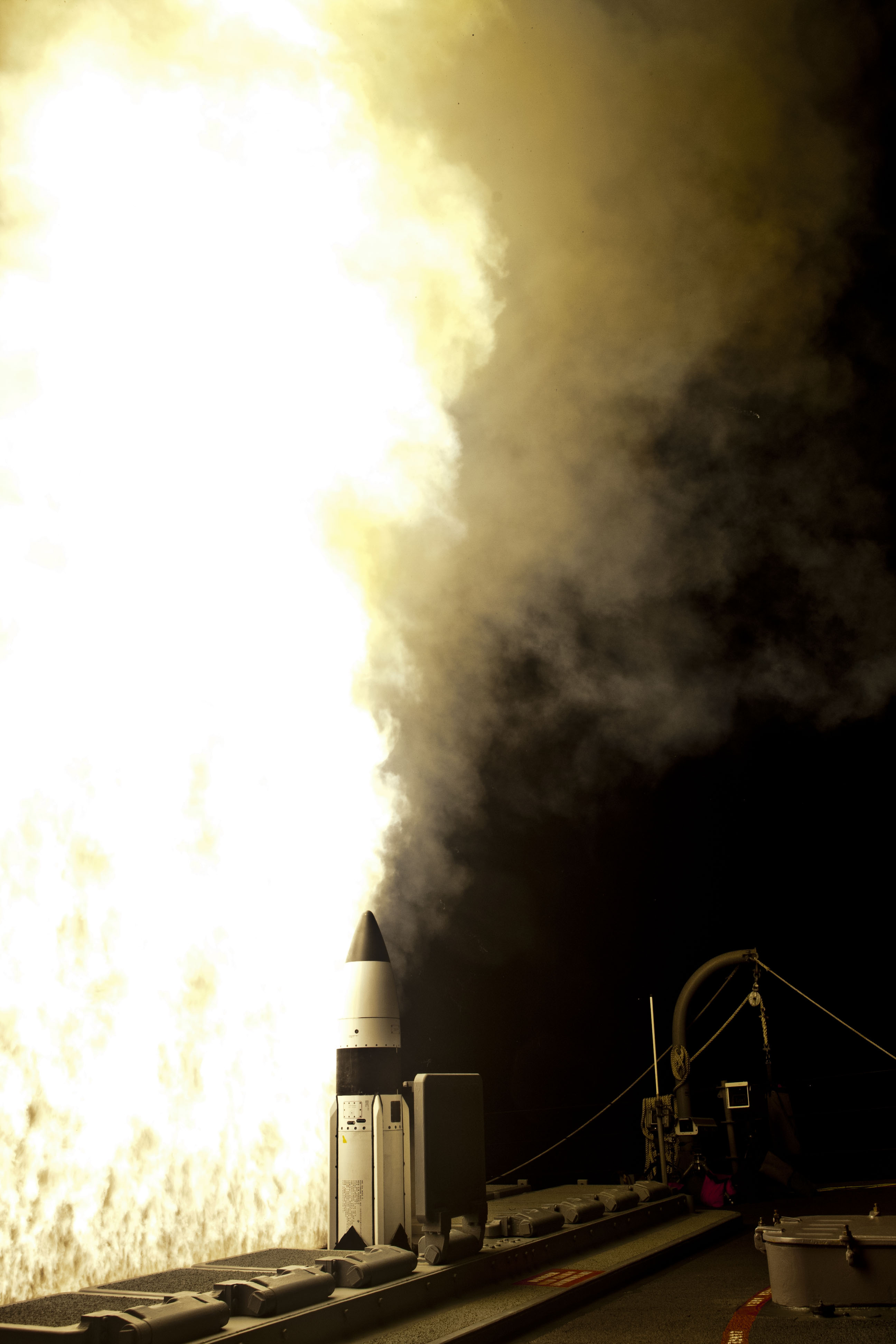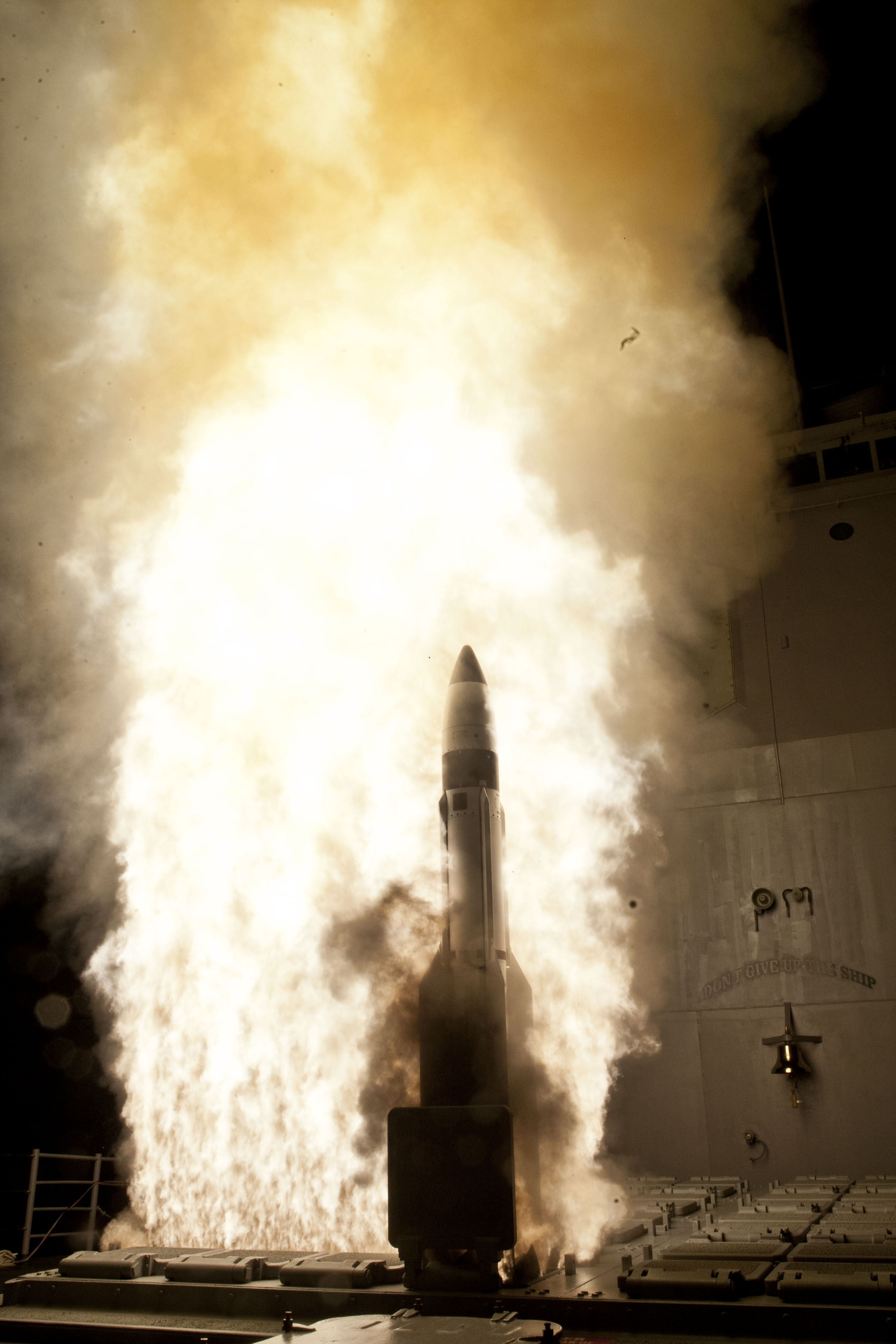Press Release
Johns Hopkins APL Plays Key Role in Test of Next-Generation Ballistic Missile Defense
On May 10, a team of APL missile and weapons system experts helped test a missile defense system that will play a key role in President Obama's plan to protect Europe against the growing ballistic missile threat from Iran.

During Flight Test Maritime-16 (FTM-16) Event 2A, engineers from The Johns Hopkins University Applied Physics Laboratory supported the Missile Defense Agency’s first successful intercept test of the Aegis Ballistic Missile Defense (BMD) 4.0.1/Standard Missile-3 (SM-3) Block IB system, an upgrade to the currently fielded system designed to destroy more sophisticated ballistic missile threats.
During the test, an Aegis Readiness Assessment Vehicle Group A (ARAV-A) target was launched from the Pacific Missile Range Facility on the island of Kauai. ’Our engineers helped the Flight Test Mission Director determine — in real time — whether the target achieved the minimum flight parameters needed to ensure a good target,” says Vishal Giare, APL’s assistant program area manager for Aegis BMD.
Then, an Aegis Cruiser stationed off Kauai used an advanced, automatic detect and track, multifunctional phased-array radar, the AN/SPY-1, to detect the ARAV-A target. ’The Aegis BMD 4.0.1 system successfully tracked and handed over the target to its SM-3 Block IB missile to support intercept in the exo-atmosphere,” Giare said.
This was the second of a series of planned developmental flight tests for the Aegis BMD 4.0.1/SM-3 Block IB system to demonstrate the capability of the SM-3 BLK IB missile. The first test experienced a failure during the third stage phase of flight of the SM-3 missile. Upon completion of the flight test series of this upgrade, the Aegis BMD system will be able to engage increasingly longer range, more sophisticated ballistic missiles.
"Leveraging much of the design of the successful Block IA missile, which is currently in use by the fleet, the Block IB demonstrated an enhanced kinetic warhead with a new divert and attitude control system, as well as a two-color infrared seeker to improve endgame capability,” Giare says. "The ship’s system also demonstrated improvements to the AN/SPY-1 radar using a new BMD signal processor with enhanced resolution, tracking, and discrimination capability.”
Ultimately, this system is planned as a central component of the Phased Adaptive Architecture envisioned by President Obama for ballistic missile defense of Europe.
As the technical direction agent for Aegis BMD, APL is integral in the full systems engineering life-cycle of the system, including testing and transition of the BMD capability to the fleet. APL played a critical role in planning and designing the mission scenario, evaluating the test target, and predicting the Aegis BMD system performance for the test.
The Missile Defense Agency and the Navy cooperatively manage the Aegis BMD Program. Raytheon Missile Systems, Tucson, Ariz., is the prime contractor for the development of the SM-3. Lockheed Martin Maritime Systems and Sensors, Moorestown, N.J., manages the development of the Aegis BMD Weapon System installed in Aegis cruisers and destroyers.
For more information about APL, visit www.jhuapl.edu. For images and/or information about FTM-16 Event 2A, visit www.mda.mil.
